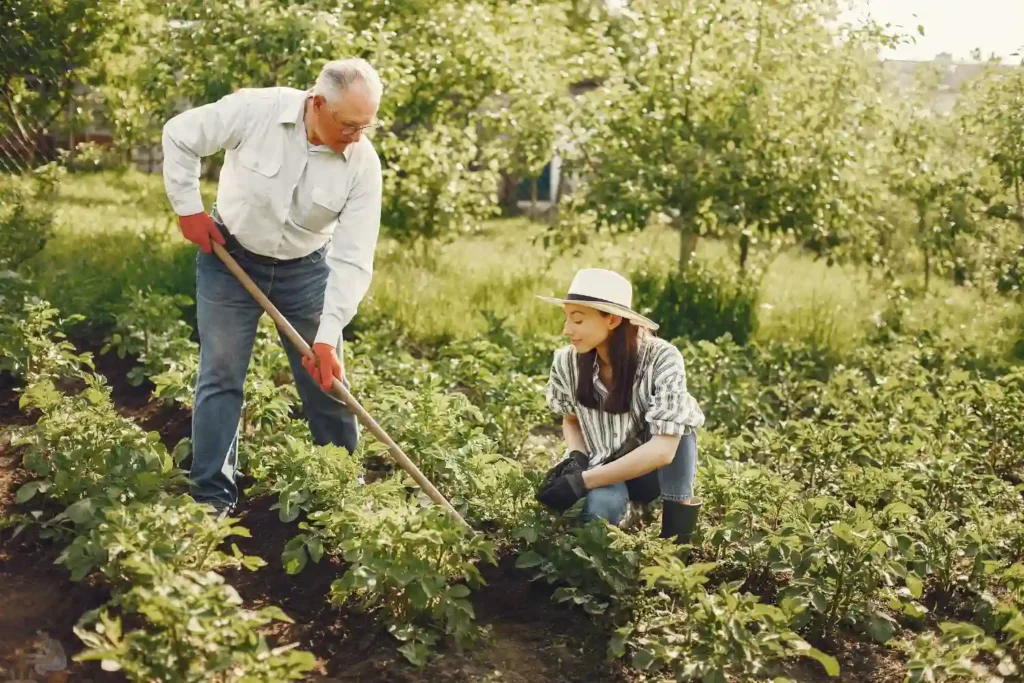A permaculture garden helps you grow food and care for the environment by working with nature. This approach reduces waste, saves water, and supports wildlife. With the right plan, your garden can thrive with little effort. This guide will walk you through the steps to design a garden that is easy to maintain and productive.
Understanding Permaculture Gardening
What is Permaculture Gardening?
Permaculture gardening follows natural patterns to create a self-sustaining space. It combines different plants, helps the soil stay rich, and reduces the need for extra watering and fertilizers.
How Permaculture Creates Harmony Between Plants, Animals, and People
Permaculture connects people, plants, and animals in a way that helps all three. Plants grow together in a way that helps each other, animals play their role in controlling pests, and humans get healthy food with less work.
Observing and Understanding Your Garden Space
Observe Your Garden: What to Look For and Why
Before planting, take time to look at your space. Notice how much sun each area gets, how the soil feels, and where rainwater flows. These details will help you place your plants in the best spots.
Factors That Affect Your Local Climate
Weather affects how plants grow. Think about how hot or cold your area gets, how much it rains, and how strong the wind is before picking plants.
What Are Microclimates?
Some areas in your garden will be warmer or cooler than others. These are called microclimates. Planting the right crops in these spots will help them grow better.
What Are Contours?
Contours are the shape of the land. They show how water moves through your garden. Using contours well can help prevent soil erosion and keep your plants healthy.
Key Steps to Designing a Permaculture Garden
Step 1: Think Holistically
Look at your garden as a whole. Each part should work together, from plants to water sources to pathways.
Step 2: Know Your Zones of Use
Divide your garden into areas based on how often you visit them. Keep vegetables and herbs near the house, while trees and compost bins can be farther away.
Step 3: Know Your Local Climate
Pick plants that grow well in your area. Native plants usually need less water and care.
Step 4: Find Your Microclimates
Use shady areas for plants that need less sun and sunny spots for plants that love warmth.
Step 5: Note Topography
Look at slopes and hills: plan garden beds and pathways based on how water flows through your space.
Step 6: Channel Water Efficiently
Use mulch, rain barrels, and trenches to keep water where needed instead of letting it run off.
Step 7: Ensure Proper Access & Pathways
Create clear paths to protect soil and make it easier to move around your garden.
Step 8: Investigate the Weeds (Plants as Bioindicators & Nutrient Managers)
Weeds can show what’s missing in the soil. Some weeds mean the soil is too dry, while others can add nutrients.
Step 9: Placing Your Structures & Buildings
Place sheds, greenhouses, and compost bins where they are easy to reach but don’t block sunlight.
Bonus Step: Aesthetics & Design Elements
A garden should be helpful but also lovely to look at. Add flowers, seating areas, and pathways to make it inviting.
Practical Tips for Implementing Permaculture Design
Stay Committed and Take Notes
Keep a journal to track what works and what doesn’t. Adjust your design as needed.
Choose Optimal Times for Observing & Planting
Watch how your garden changes with the seasons and plant at the right times.
Use a Timer for Efficient Planning
Set reminders for watering, pruning, and harvesting to keep your garden on track.
Materials You Need to Observe Well
Use a notebook, thermometer, and rain gauge to keep track of your garden’s conditions.
Additional Considerations & Resources
Planting by the Moon: Does It Work?
Some gardeners plant by the moon’s phases. Try it and see if it improves your harvest.
Books on Weeds and Their Role in Permaculture
Learning about weeds can help you understand soil health and improve your garden naturally.
The Power to Choose a More Effective System
Customize your garden design to fit your needs. There is no one right way to do permaculture.
Frequently Asked Questions
How do I get started with permaculture gardening?
Start by observing your space, noting sunlight, soil, and water movement. Plan a simple layout and begin with a few plants.
How do I create microclimates in my garden?
Use trees, hedges, and water features to create different conditions in your garden.
What are the best plants for a permaculture garden?
Choose native plants, fruit trees, herbs, and nitrogen-fixing plants that improve soil health and reduce maintenance.
Conclusion:
A well-planned permaculture garden provides food, protects the environment, and needs less work over time. By picking the right plants and using water wisely, you can create a space that grows naturally and stays productive year after year.




